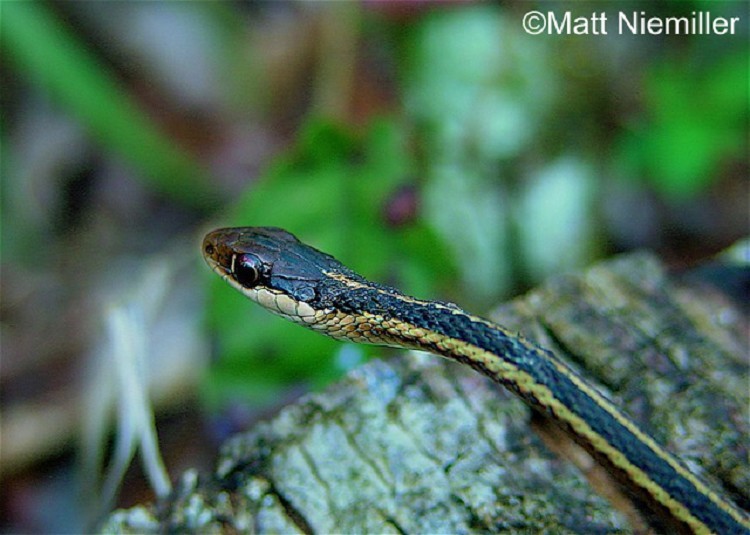Eastern Ribbonsnake, Thamnophis sauritus
Common Ribbonsnake (T. s. sauritus), the only subspecies in the state, occurs in West Tennessee and in several counties on the Highland Rim in southern and western Middle Tennessee.
Description: A slender, medium-sized snake (18.0 to 26.0 inches in length) with a long tail (approximately 1/3 of the total length) and keeled scales. Three light stripes, usually yellow, extend the length of the dark body. One stripe runs down the center of the back, which may have an orangish or greenish tinge, and one runs down each side located on the 3rd and 4thscale rows (counting up from the belly scales).
The dark head may have faint, light spots that do not touch each other; the lower jaw lacks black markings. The unmarked belly is white to yellowish or light green. Young are identical to adults.
Similar Species: Western Ribbonsnake has bright spots on the head that touch each other. Eastern Gartersnake has black markings on the lower jaw; side stripes are lower on the body (scale rows 2 and 3).
Habitat: A semi-aquatic snake that rarely travels far from water. Often found along the grassy or brushy edges of streams, rivers, ponds, lakes, sloughs, or wetlands.
Diet: Prefers frogs, toads, salamanders, and fish; occasionally eats spiders and insects.
Breeding information: Adults court and mate in the spring. After breeding the male inserts a copulatory plug to prevent other males from mating with that particular female. Females give live birth to 3-36 young during summer or fall; the average litter size is 12.
Status in Tennessee: Locally common in their preferred habitat and are not protected in the state.
Fun Facts:
- Ribbonsnakes are one of the fastest snakes in TN making them very difficult to catch.
- When escaping into the water, these snakes glide smoothly across the surface instead of diving.
Best places to see in Tennessee: Around the edges of aquatic habitats in West TN or western Highland Rim.
